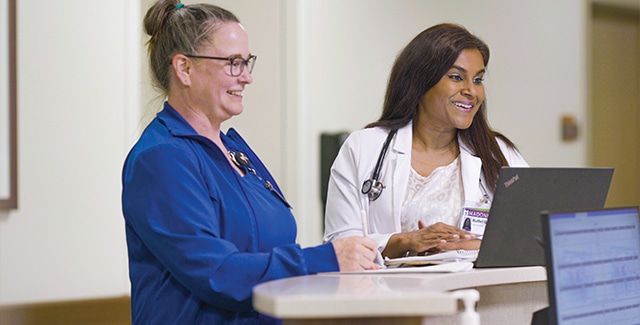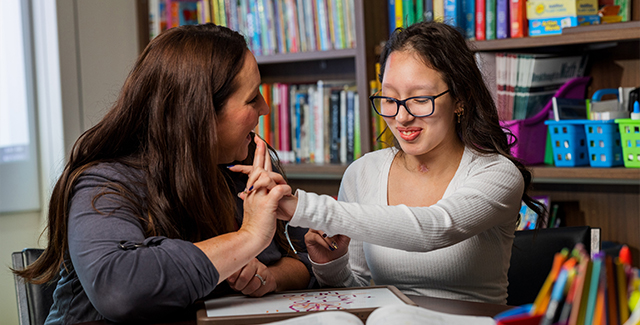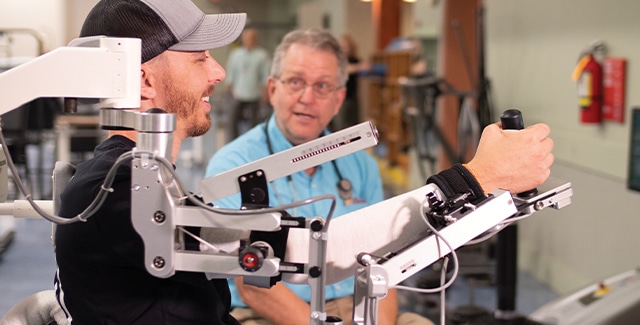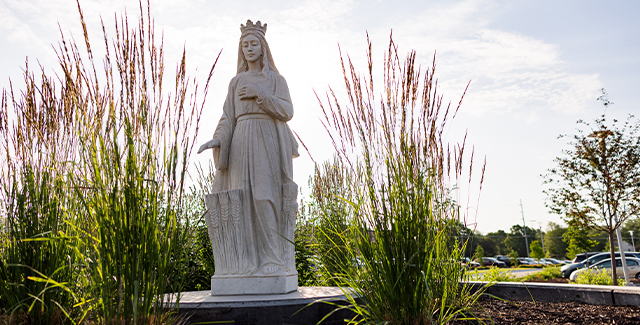In the intricate intersection of health care and workers’ compensation insurance, effective communication and collaboration among clinical staff are vital, especially when treating injured workers with diverse medical needs. Madonna Rehabilitation Hospitals, one of the largest, free-standing rehabilitation hospital systems in the nation, embraces a holistic and interdisciplinary approach to patient care. A key aspect of this approach is Madonna’s continuity of care across various levels, ranging from inpatient facilities to outpatient services.
“Throughout their stay, the majority of our patients are followed by both a hospitalist, a physician who specializes in internal medicine, as well as a physiatrist, a physician who specializes in physical medicine and rehabilitation,” Dr. Adam Kafka, a medical director on the Madonna Lincoln Campus, said. “When a patient is in our Specialty Hospital, the hospitalist is the primary physician, whereas in our inpatient Rehabilitation Hospital, the physiatrist is the primary physician. However, both physicians can and frequently do consult the other. This allows continuity of care and facilitates a smooth transfer as patients move between levels of care while at Madonna.”
Dr. Julie Lyon, Madonna’s chief medical officer, senior medical director for the Lincoln Campus and the medical director for Madonna’s long-term care nursing facility, says this proactive co-treatment strategy ensures that patients’ individualized needs and goals are consistently understood and integrated into their care plans.
“Our Specialty Hospital is unique because we ensure that patients receive the necessary medical attention while also working towards functional independence,” Lyon said. “Madonna’s dual-focused, physician-led model can help mitigate medical complications, such as pressure injuries, and accelerate recovery. Research has shown that early mobilization increases blood flow, which aids in healing. Additionally, our therapies facilitate the thousands of repetitions needed to achieve neuroplasticity, effectively re-wiring the brain-body connection.”
Madonna’s collaborative spirit remains strong throughout an injured worker’s stay, with regular meetings among care team members. This care team, which includes physicians, therapists, rehabilitation nurses, work comp case managers, social workers, and other various specialists, frequently convenes to discuss the patient’s progress and any emerging needs, ensuring that everyone stays informed and aligned on treatment strategies. Furthermore, Madonna’s commitment to patient-centered care is evident in their efforts to involve patients and their families in every step of the rehabilitation process.
“Patient and family education is integral to our rehabilitation model,” Kafka said. “By actively engaging families in the decision-making process, Madonna fosters a unified mission that drives the entire team toward achieving what patients aspire to in their recovery journey.”
Indeed, Kafka’s passion for medical rehabilitation stems from the belief that patient outcomes significantly improve when various disciplines work together.
“I have had the privilege to co-treat injured workers throughout their inpatient and outpatient rehabilitation journey and witness them get back to activities they never thought possible,” Kafka said. “With the intensive involvement of not just the therapists, but also neuropsychology and working closely with their employer, we have been able to help people who have sustained traumatic brain injuries, amputations, and spinal cord injuries get back to their jobs and life roles.”





